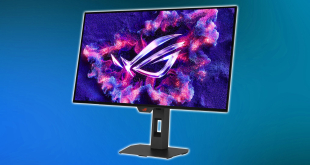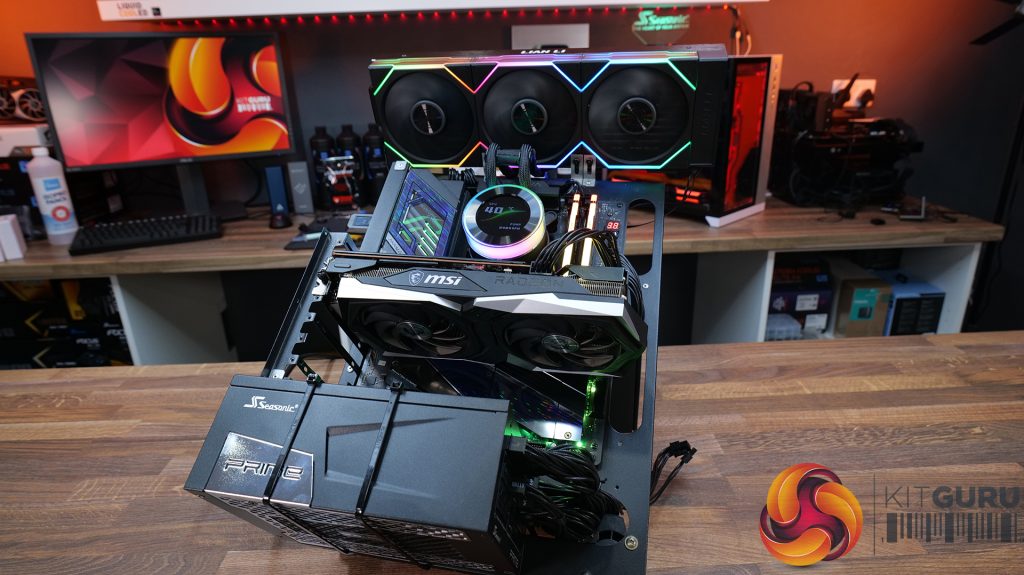
Test System Specifications:
- CPU: AMD Ryzen 9 9950X
- Motherboard: ASRock Phantom Gaming X870E Nova WiFi
- Memory: 32GB (2 x 16GB Modules) Kingston Fury DDR5-6000
- Graphics card: MSI Radeon RX 6600 XT Gaming X
- Storage: 1TB Corsair MP600 Elite PCIe Gen4x4 NVME M.2 SSD
- Power Supply: Seasonic Prime TX-1600
- Chassis: Open Test Bench
- Thermal Compound: Arctic MX-6
- O/S: Windows 11 Version 24H2
Testing Methodology:
We are primarily focussing on the performance of each cooler at 100% fan speed and also when locked to 40dBA noise output. We will focus on cooling performance using a manual overclock with all-core frequency and VCORE locked to 5.2GHz/1.3v (AMD) and 5.5GHz/1.3v (Intel) and Precision Boost Overdrive performance.
- The test data is logged using HWINFO and the final 10 minutes of the data is calculated to find the average CPU temperature and CPU clock multiplier (AMD PBO Test) and then plotted in the charts.
- For testing, we use a 30-minute looped run of Cinebench R23 and record the steady-state CPU temperature at the end of the test. This ensures that the CPU has had ample time to warm up and reach a steady state under all of the coolers.
- The ambient is maintained at 19-21 degrees Celsius. Where there is variation beyond this temperature range, we add extra repeated tests to ensure consistency. However, this is well controlled now with A/C.
- We also test each cooler with at least two fresh installs (typically three) to mitigate the likelihood of poor mounting spoiling results.
- Ambient temperature and humidity are controlled via a mini split air conditioning system inside the test room. Ambient temperature is maintained between 19-20C, Temperature delta figures are shown in the charts (ambient temperature is deducted from the measured component temperature).
Test Results:
Acoustics
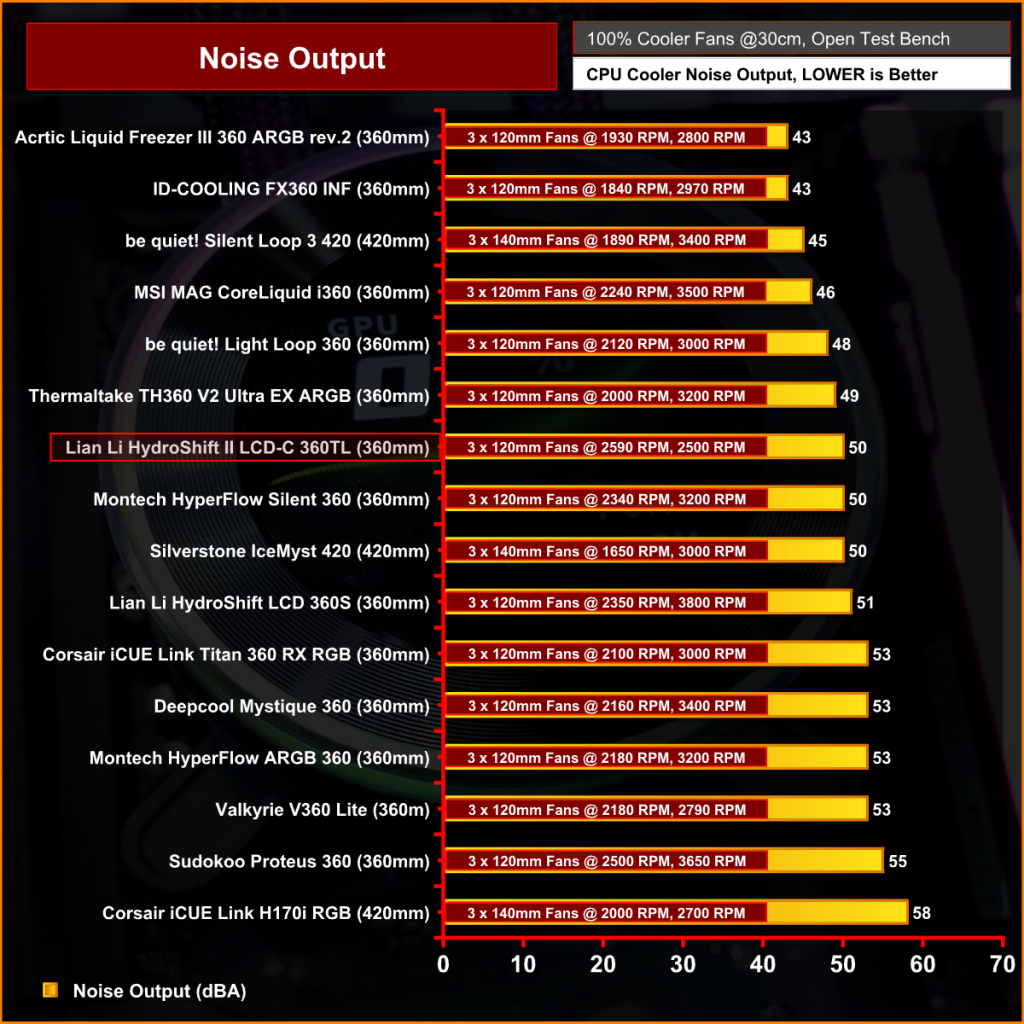
We’ll start by looking at noise output as this will give us a better understanding of thermal performance based on the noise.
The Lian Li HydroShift II LCD is by no means a quiet cooler at 100% fan speed with a maximum noise output of 50dBA, however at almost 2600 rpm the maximum fan speed is very high and compared with other fans at similar speed the noise output of the Lian Li TL fans is quiet in comparison.
Thermal Performance: AMD Ryzen 9 9950X
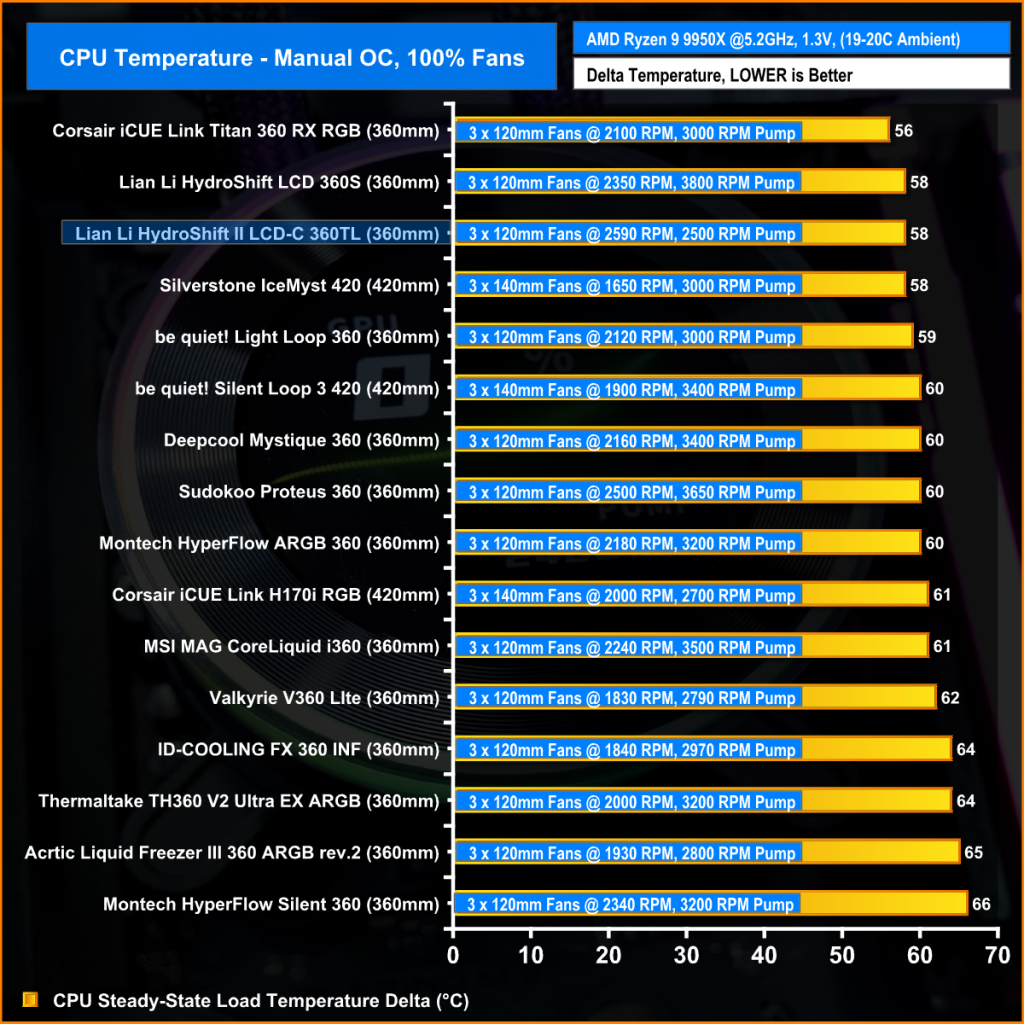
With the fans at max speed the HydroShift II LCD is trading blows with some of the top coolers we have tested so far on the 9950X. Even though it has a slimmer radiator, it still performs on par with its predecessor and is level pegging with the top-ranking 420mm AIO at 58°C over ambient average CPU temperature.
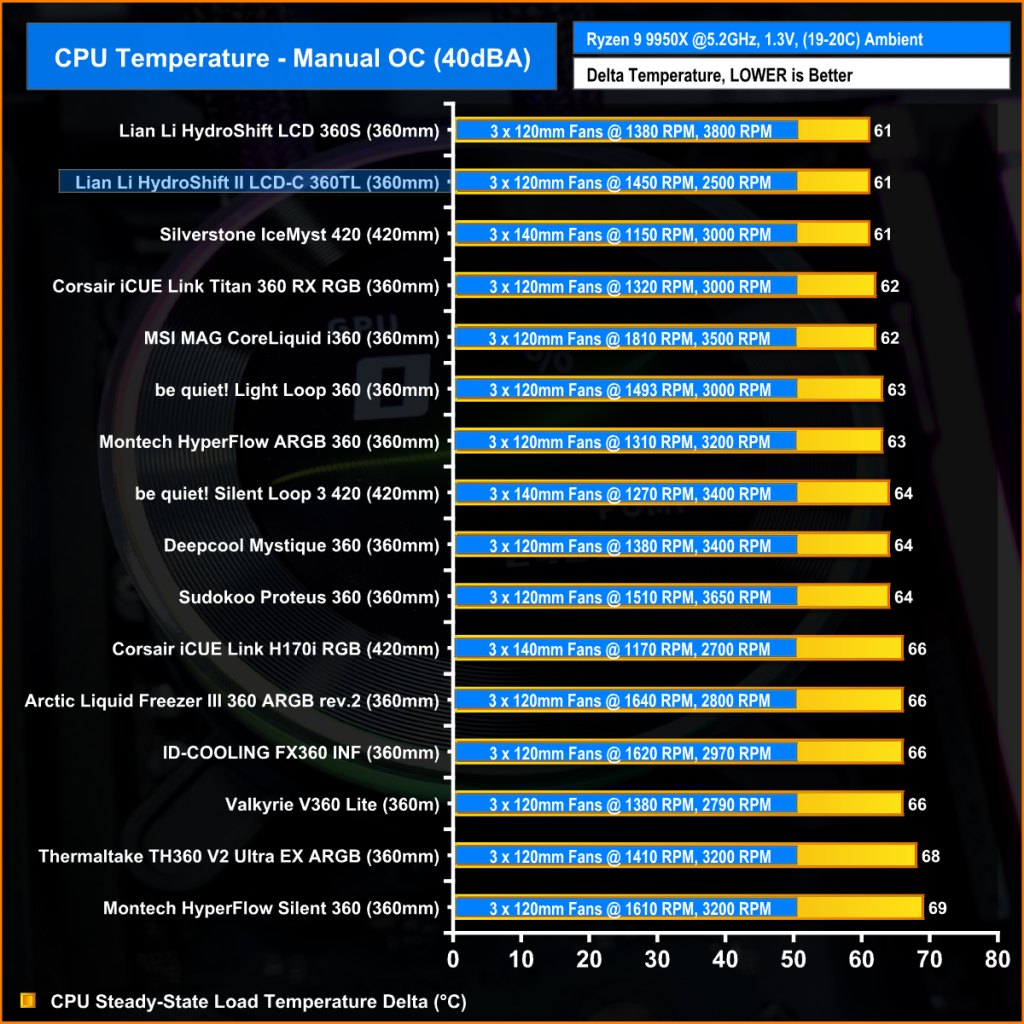
For the HydroShift II LCD to hit the 40dBA noise normalised target we had to reduce fan speed down to 1450 rpm but the cooler still hangs on with solid thermal performance at 61°C over ambient, which again equals the original HydroShift performance and is again on par with the 420mm Silverstone ICEMYST which is remarkable considering its giving up some cooling surface area against both these coolers.
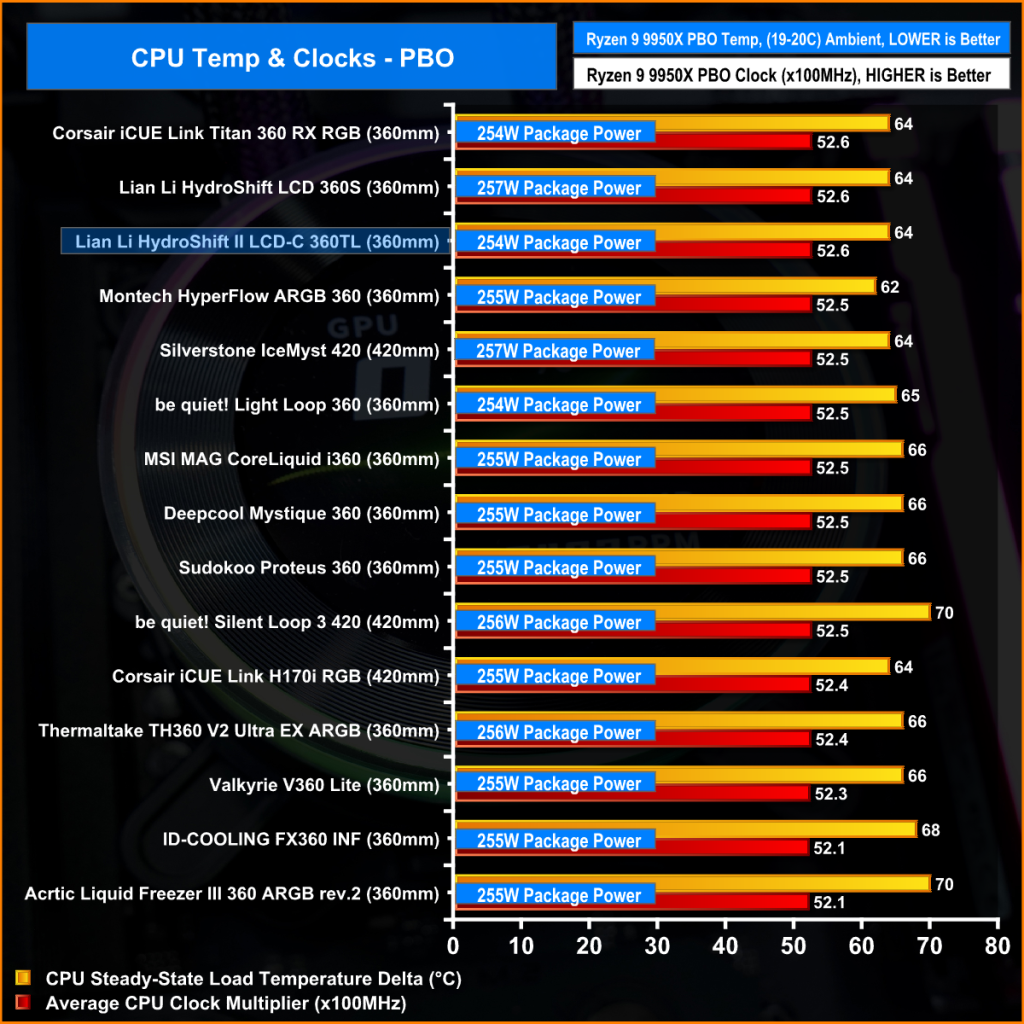
The important metric in the PBO test is clock speed as the CPU automatically adjusts frequency based on temperature so the temperature delta between coolers is very close.
In this scenario the Lian Li HydroShift II LCD-C is again at the top end of our chart with an average clock multiplier of 52.6x while cooling over 250W package power. It matches the performance of its predecessor and outperforms the 420mm Silverstone unit. So even though the radiator dimensions have been slimmed down, there's no reduction in performance, which is very impressive.
 KitGuru KitGuru.net – Tech News | Hardware News | Hardware Reviews | IOS | Mobile | Gaming | Graphics Cards
KitGuru KitGuru.net – Tech News | Hardware News | Hardware Reviews | IOS | Mobile | Gaming | Graphics Cards


